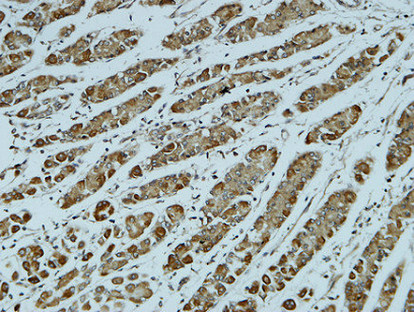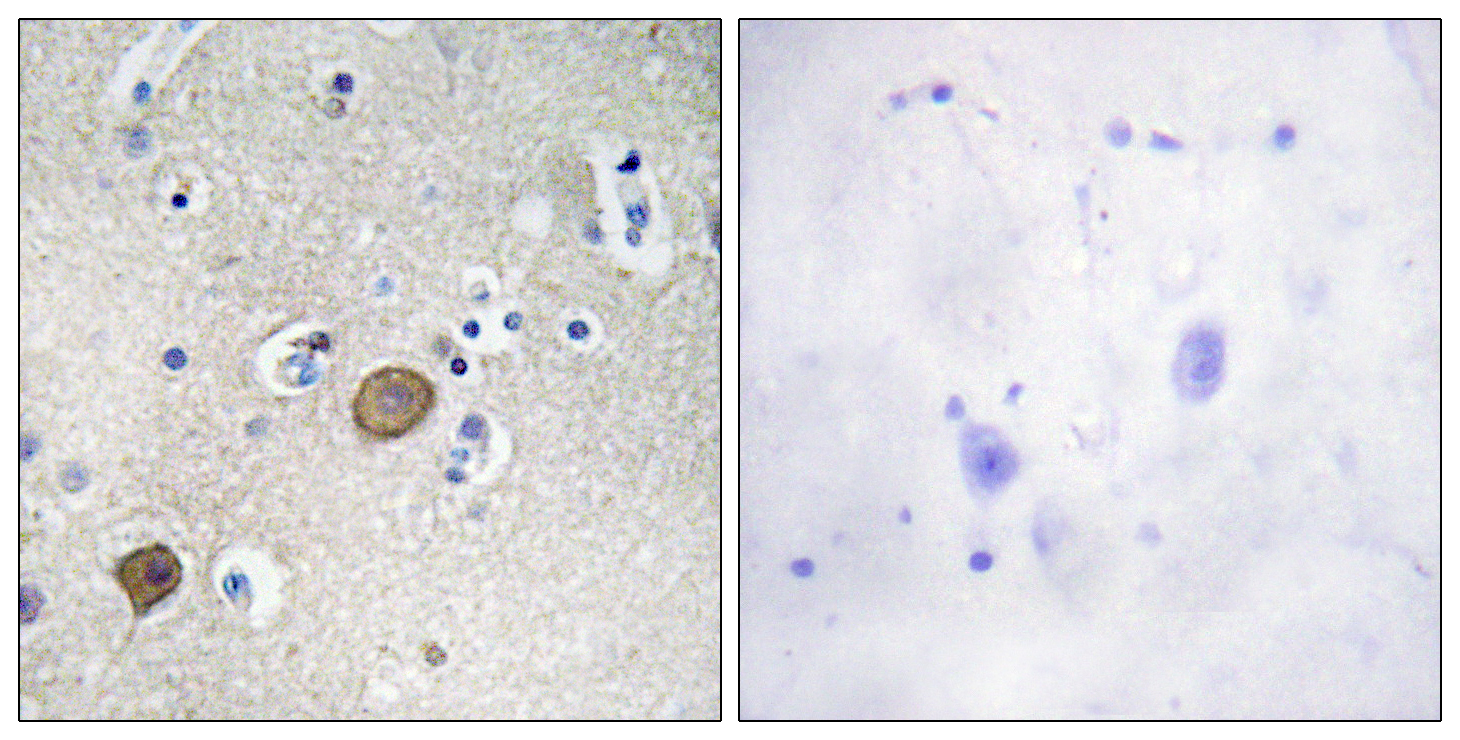Catenin-α1 Polyclonal Antibody
- Catalog No.:YT0670
- Applications:IHC;IF;ELISA
- Reactivity:Human;Mouse;Rat
- Target:
- Catenin-α1
- Fields:
- >>Hippo signaling pathway;>>Adherens junction;>>Leukocyte transendothelial migration;>>Bacterial invasion of epithelial cells;>>Pathways in cancer;>>Endometrial cancer;>>Gastric cancer;>>Arrhythmogenic right ventricular cardiomyopathy
- Gene Name:
- CTNNA1
- Protein Name:
- Catenin alpha-1
- Human Gene Id:
- 1495
- Human Swiss Prot No:
- P35221
- Mouse Gene Id:
- 12385
- Mouse Swiss Prot No:
- P26231
- Immunogen:
- The antiserum was produced against synthesized peptide derived from human Catenin-alpha1. AA range:607-656
- Specificity:
- Catenin-α1 Polyclonal Antibody detects endogenous levels of Catenin-α1 protein.
- Formulation:
- Liquid in PBS containing 50% glycerol, 0.5% BSA and 0.02% sodium azide.
- Source:
- Polyclonal, Rabbit,IgG
- Dilution:
- IHC 1:100 - 1:300. ELISA: 1:5000.. IF 1:50-200
- Purification:
- The antibody was affinity-purified from rabbit antiserum by affinity-chromatography using epitope-specific immunogen.
- Concentration:
- 1 mg/ml
- Storage Stability:
- -15°C to -25°C/1 year(Do not lower than -25°C)
- Other Name:
- CTNNA1;Catenin alpha-1;Alpha E-catenin;Cadherin-associated protein;Renal carcinoma antigen NY-REN-13
- Molecular Weight(Da):
- 100kD
- Background:
- catenin alpha 1(CTNNA1) Homo sapiens This gene encodes a member of the catenin family of proteins that play an important role in cell adhesion process by connecting cadherins located on the plasma membrane to the actin filaments inside the cell. The encoded mechanosensing protein contains three vinculin homology domains and undergoes conformational changes in response to cytoskeletal tension, resulting in the reconfiguration of cadherin-actin filament connections. Certain mutations in this gene cause butterfly-shaped pigment dystrophy. [provided by RefSeq, May 2016],
- Function:
- disease:Abnormalities of alpha-catenin are involved in the process of cancer invasion and metastasis.,function:Associates with the cytoplasmic domain of a variety of cadherins. The association of catenins to cadherins produces a complex which is linked to the actin filament network, and which seems to be of primary importance for cadherins cell-adhesion properties. May play a crucial role in cell differentiation.,PTM:Sumoylated.,similarity:Belongs to the vinculin/alpha-catenin family.,subcellular location:Found at cell-cell boundaries and probably at cell-matrix boundaries.,subunit:Binds MLLT4 and F-actin (By similarity). Interacts directly with PSEN1 and CTNNB1 to form part of the PSEN1/cadherin/catenin adhesion complex. Interacts with ARHGAP21 and with JUB.,tissue specificity:Expressed ubiquitously in normal tissues.,
- Subcellular Location:
- [Isoform 1]: Cytoplasm, cytoskeleton. Cell junction, adherens junction. Cell membrane; Peripheral membrane protein; Cytoplasmic side. Cell junction. Found at cell-cell boundaries and probably at cell-matrix boundaries.; [Isoform 3]: Cell membrane ; Peripheral membrane protein ; Cytoplasmic side .
- Expression:
- Expressed ubiquitously in normal tissues.
- June 19-2018
- WESTERN IMMUNOBLOTTING PROTOCOL
- June 19-2018
- IMMUNOHISTOCHEMISTRY-PARAFFIN PROTOCOL
- June 19-2018
- IMMUNOFLUORESCENCE PROTOCOL
- September 08-2020
- FLOW-CYTOMEYRT-PROTOCOL
- May 20-2022
- Cell-Based ELISA│解您多样本WB检测之困扰
- July 13-2018
- CELL-BASED-ELISA-PROTOCOL-FOR-ACETYL-PROTEIN
- July 13-2018
- CELL-BASED-ELISA-PROTOCOL-FOR-PHOSPHO-PROTEIN
- July 13-2018
- Antibody-FAQs
- Products Images

- Immunohistochemical analysis of paraffin-embedded Human stomach. 1, Antibody was diluted at 1:200(4° overnight). 2, High-pressure and temperature EDTA, pH8.0 was used for antigen retrieval. 3,Secondary antibody was diluted at 1:200(room temperature, 30min).

- Immunohistochemical analysis of paraffin-embedded Human stomach. 1, Antibody was diluted at 1:200(4° overnight). 2, High-pressure and temperature EDTA, pH8.0 was used for antigen retrieval. 3,Secondary antibody was diluted at 1:200(room temperature, 30min).

- Immunohistochemical analysis of paraffin-embedded Human stomach. 1, Antibody was diluted at 1:200(4° overnight). 2, High-pressure and temperature EDTA, pH8.0 was used for antigen retrieval. 3,Secondary antibody was diluted at 1:200(room temperature, 30min).

- Immunohistochemistry analysis of paraffin-embedded human brain tissue, using Catenin-alpha1 Antibody. The picture on the right is blocked with the synthesized peptide.



